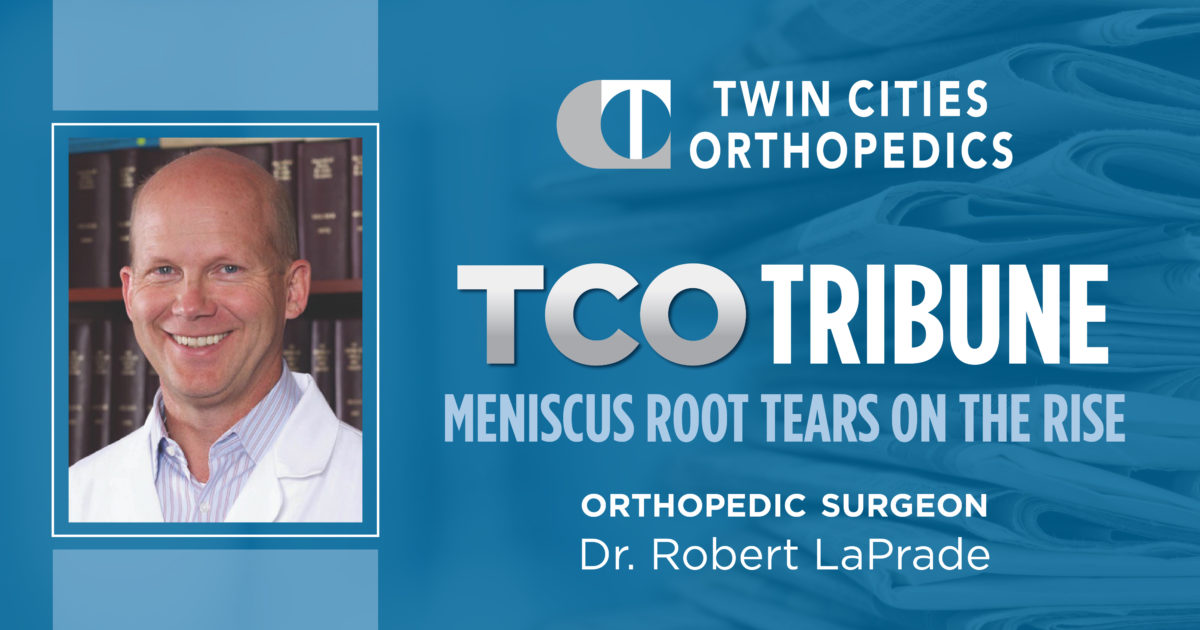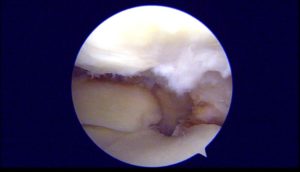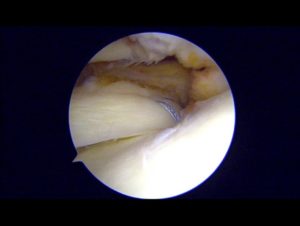
April 13, 2020 - TCO
Meniscus Root Tears on the Rise
Meniscus root tears have become increasingly recognized as a source of knee problems over the past decade. In fact, prior to 2006, there were hardly any mentions of them in the peer-reviewed literature. This article explores the newly-recognized knee epidemic and why it is a semi-urgent requirement for surgery.
Understanding the Meniscus
Overall, a meniscus serves as a shock absorber in the knee. Without a meniscus, due to it being taken out, or resected, the affected side of the knee (either the medial (inner) or lateral (outer) compartments) invariably gets overloaded and the overlying cartilage on the bone can wear out, essentially becoming arthritic. A meniscus is basically C-shaped and attached to bone at both the front and back portions of the C-shape. These bony attachments are what are called the root attachments.
Prior to and into the early parts of the past decade, as a profession, the role of the meniscus root attachments in joint health were not well recognized. These meniscus root attachments to bone have been found to be essential to hold the meniscus in the joint, and to maintain its role as a shock absorber. In fact, in some studies, meniscus root tears were found to be the main cause of patients under the age of 60 years old to require a total knee replacement.
Causes of Meniscus Root Tears
The most common meniscus root tear is to the back of the medial meniscus (posterior horn attachment). These tears often occur when a patient is kneeling or bending their knee a lot (gardening, plumbing, carpet laying, going up stairs, falling in sports, etc.) and the patient may feel a “pop” in the back of their knee. Also, in most patients, they have pain in the back, or to the inside, aspect of their knee due to the meniscus basically being squished out of the knee because it is no longer attached to bone (we call this “extrusion”).
Over time (which can be over weeks to months), patients have increasing pain and swelling with activities which often brings them into a physician’s office to be checked out. It is important to recognize that the signs of arthritis are pain and swelling with activities, so usually by the time that pain and swelling occurs most patients are developing arthritis due to the root tear.
Diagnosing Meniscus Root Tears
As physicians, we want to diagnose and treat these root tears soon after injury, prior to the development of any significant arthritic changes, so that we can prevent or postpone the need for a joint replacement.
Unfortunately, few patients have a “typical” physical exam which points to a meniscus root tear. Obtaining x-rays at their appointment while one is standing to ensure that the cartilage on that part of the joint is not too worn out is essential, because once there is too much wear (close to or complete bone-on-bone changes), a root repair would not benefit the patient, even in young patients.
The main way to diagnose a meniscus root tear is with an MRI scan. The MRI can show the root position from bone, show how much the meniscus may be extruded out of the joint, show if the bone is basically being overloaded or stressed, and if the cartage on the end of the bone is still sufficiently present, which would indicate if the patient is still a candidate for a repair.
Repairing Meniscus Root Tears
In order to restore the function of a torn meniscus root, the meniscus must be both pulled back inside the joint and have its attachment to bone restored. Our research has found that simply tacking down the meniscus to bone when it is extruded, which we call a non-anatomic repair, does not work to slow down the symptoms of a root tear and the progression of arthritis.
Therefore, the almost universal technique for this type of repair occurs by placing stitches in the tear, then shuttling the stitches down small tunnels that are drilled at the meniscus attachment to the shinbone (tibia). This is called the transtibial tunnel or transtibial root repair technique.
Combined with this technique is the requirement to release the extruded meniscus from scar tissue so that it can be pulled back into the joint and function as a good shock absorber once again. It is also very important that a well-supervised rehabilitation program be combined with this surgery to ensure the best chance of healing for these particular tears.
Before and After Photos
- (Left) Example of a medial meniscus root tear in a left knee.
- (Right) Same left knee with a transtibial medial meniscus root tear repair with the stitches in the tear.


Positive Surgical Outcomes
Our research, as well as that of many industry peers, has reported that most patients who have a meniscus root repair have relief of most (or all) of their knee pain, and also slow down the progression of arthritis.
While these tears were not well-recognized 5-10 years ago, they are now one of the most commonly performed types of meniscus repair around the world.

